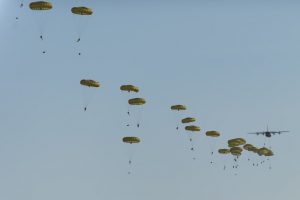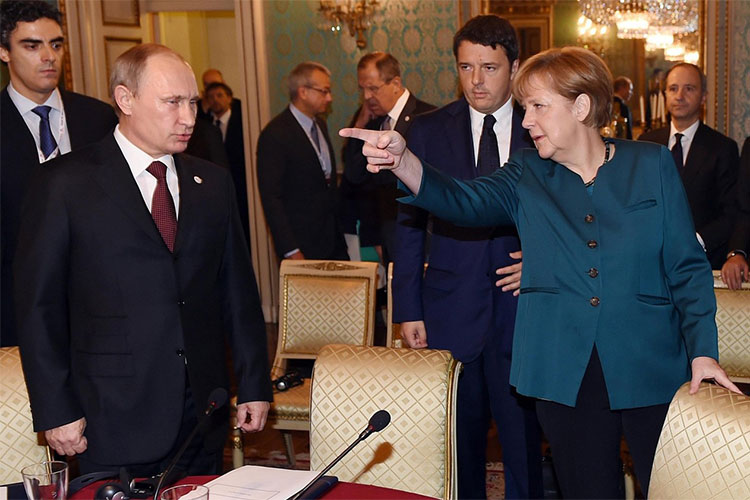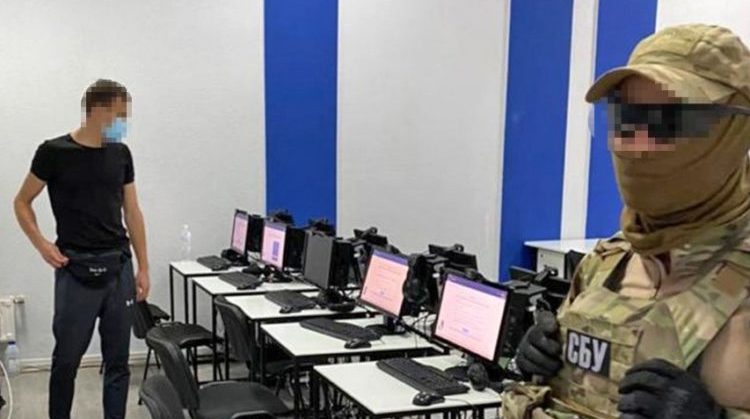
Cognizant of the need to demonstrate that Ukraine can credibly counter this possible aggression, Kyiv scheduled its own large-scale military exercise, Joint Endeavor 2020, with the active part beginning on September 22. According to General Oleksiy Taran, the head of the Doctrines and Training Department of the General Staff of the Ukrainian Armed Forces (UAF), the strategic command staff drills involved more than 12,000 military personnel and some 700 vehicles (Interfax, September 15). During the exercise, UAF troops were deployed according to the newly adopted joint (J) structure modeled on North Atlantic Treaty Organization (NATO) standards. Joint Endeavor 2020 also featured the first use of Ukraine’s latest advanced weapons acquisitions, including the Ukrainian-developed Vilkha multiple-launch rocket system (MLRS) as well as the RK-360MZ Neptun anti-ship cruise missile complex (Mil.gov.ua, September 24). Additionally, Ukrainian Bayraktar TB2 unmanned aerial vehicles (UAV) made a successful test airstrike in the Mykolaiv region (west of Kherson) (Defence.ua, September 23).
Yet the most interesting part of the drills may have been the participation of international partners. More than 200 foreign observers, military consultants and instructors from NATO, the United States, United Kingdom, Germany, Lithuania and Poland scrutinized or took part in Joint Endeavor. The exercise began with a massive airdrop of 700 UK paratroopers from the 16th Air Assault Brigade, together with their Ukrainian colleagues (Mil.gov.ua, September 19). And for the first time ever, four US B-52H Stratofortress strategic bombers flew through Ukrainian airspace, conducting imitation airstrikes near the Azov Sea and western areas of Ukraine (Mil.gov.ua, September 24). Moreover, according to Ukrainian expert Andriy Klimenko, at least seven different US and UK reconnaissance planes (Sentinel R-1, RC-135W, P-8A and others) operated around the Black Sea as part of the exercise, working closely with Ukrainian fighter jets and exchanging information on targets and air traffic (Facebook.com, September 23).
 A particularly spectacular element involved two CV-22 Osprey tiltrotor aircraft from the US 352nd Special Operations Wing (SOW), which took part in the smaller, concurrent Fiction Urchin exercise. First, the Ospreys joined Ukrainian special operations forces in Khmelnytskyi Oblast to conduct joint training in drop-outs and roping (YouTube, September 22). Then, the US Air Force practiced refueling these military planes in the Black Sea region (Mil.gov.ua, September 24). Finally, the Ospreys conducted a low-altitude flight above central Kyiv (YouTube, Facebook.com/352sow, September 23). The showy demonstrations were designed to send a strong and clear message to the Kremlin that Ukraine’s international partners are closely backing Kyiv and are ready to stand up to any military aggression targeting the latter.
A particularly spectacular element involved two CV-22 Osprey tiltrotor aircraft from the US 352nd Special Operations Wing (SOW), which took part in the smaller, concurrent Fiction Urchin exercise. First, the Ospreys joined Ukrainian special operations forces in Khmelnytskyi Oblast to conduct joint training in drop-outs and roping (YouTube, September 22). Then, the US Air Force practiced refueling these military planes in the Black Sea region (Mil.gov.ua, September 24). Finally, the Ospreys conducted a low-altitude flight above central Kyiv (YouTube, Facebook.com/352sow, September 23). The showy demonstrations were designed to send a strong and clear message to the Kremlin that Ukraine’s international partners are closely backing Kyiv and are ready to stand up to any military aggression targeting the latter.
At the same time, Russia stepped up its routine disinformation and psychological operations (psy-ops) against the UAF and its partners. As in previous years, last month’s multinational exercises in Ukraine were accompanied by several waves of fake news in the Ukrainian media space that appear to have originated out of Russia. It started on September 15, with a video allegedly showing a Ukrainian fighter jet carrying out dangerous maneuvers. But the footage was swiftly debunked as a computer-generated video (RBC, September 15).
Trending Now
September 23 witnessed a broader and more far-reaching campaign. Fake news appeared about a supposed accident at the third block of the Rivne nuclear power plant, which was allegedly damaged during Rapid Trident 2020 (September 16–25) anti-terrorism exercises. The fraudsters hacked the website of the Varash city council and posted a fake order declaring a state of emergency and evacuation of the local population. The same story showed up on the official website of the regional branch of the Ukrainian National Police (UNP), which was hacked the same day (Volodymyrets.city, September 23). The press service of the Rivne plant immediately published an official refutation of the false reports (Rnpp.rv.ua, September 23), as did the Varash city council (Facebook.com/varashrada.gov.ua, September 23). The disinformation campaign played on a particularly sensitive subject: many Ukrainians died or suffered from the 1986 Chornobyl tragedy, so any hint of possible nuclear contamination or radiation was liable to spread rapidly and heighten emotions.

At the same time, hackers took down the central website of the UNP for nearly the entire day, prompting a criminal investigation. On September 25, Deputy Interior Minister Serhiy Goncharov briefed journalists that police experts were investigating how the attackers installed the malware to take down the National Police’s website. He added, that the UNP understands what measures should be taken to prevent such incidents from happening again in the future. Furthermore, he underlined that the Ukrainian government shared all of the information it had gathered in this case with foreign colleagues and partners (Mvs.gov.ua, September 23).
The website of the UNP branch in in Vinnytsia Oblast was another simultaneous victim of hackers. Its altered internet page carried a fabricated report on the arrest of a US soldier who had allegedly raped a Ukrainian schoolgirl (Suspilne.media, September 23). The general outline of this false story has appeared repeatedly before in Europe, such as the “Lithuanian Lisa” case, in which German soldiers had allegedly raped a Lithuanian girl (Deutsche Welle, February 23, 2017), or a purported case of Lithuanian soldiers claiming to have raped underage girls in Donbas. Similarly, the spokesperson for the Moscow-backed Luhansk “People’s Republic” (LNR) accused Ukrainian soldiers of attempting the same attacks on schoolgirls on Donbas (StopFake, May 11, 2018).
Also on September 23, hackers inserted fake news on the webpage of the local UNP branch in Kherson Oblast (where the final stage of Joint Endeavor 2020 took place). The false story—likewise summarily refuted—asserted that several US military advisors were accidentally killed by a mortar during the exercise (Facebook.com/khersonpolice.official, September 23).
The simultaneous hacking and seeding of multiple UNP websites with false content was novel. And though quickly rebutted, the attacks highlighted the Ukrainian government’s continued vulnerability to cyber operations. The UAF expected such activities by Moscow, according to General Staff spokesperson Colonel Bohdan Senyk (Tyzhden.ua, September 24). But as he underlined, this year, the disinformation campaign had reached an unprecedented level.
Read More:
- “Black Sea mosquito fleet”: how the UK will help Ukraine regain its naval footing
- Ukraine signs Memorandum to modernize its Navy, new partnership and trade agreement with the UK
- Are the wildfires in eastern Ukraine a form of warfare? This video suggests yes
- Pro-Kremlin disinformation is often able to influence people’s opinions, research shows
- Ukraine’s new National Security Strategy: A wide scope with foggy implementation mechanisms
- Ukraine’s new National Security Strategy: Russia as the aggressor, full NATO membership, and a few drawbacks
- US CV-22S special operation aircraft buzz Ukrainian capital, B-52H bombers enter airspace
- The Ukraine-Belarus border. Taking the Russian threat seriously
- All that is wrong with defending Russia
- Ukraine-Russia peace talks are in a stalemate as Kyiv eyes ways to revise Minsk deal
- Boosting the price of aggression. Ukraine updates its sanctions policy against Russia
- Zelenskyy is solving the wrong war





